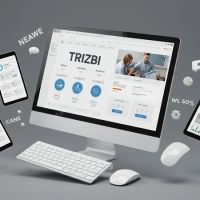
If you are a company that is starting a B2B business model from scratch or wants to develop its product range in order to strengthen its current situation, we recommend that you do not ignore the importance of determining the target market in B2B. The target market in B2B is the market that is likely to be interested in the products and services you will offer, has a high probability of purchasing, and where your company wants to work. When the target market is determined, you have the chance to take steps that will increase your chances of success by creating strategies that are suitable for its own internal dynamics.
Definition and Strategies of Target Market Selection in B2B
Target market selection in B2b is the process of determining the target audience to be marketed in order to market products and services in light of the data obtained and using the most appropriate strategy that we will discuss below. After the target market selection is made, you have the chance to determine your potential competitors and the status of your competitors by narrowing down the obtained data to this audience. It is possible to diversify your products and services by finding suitable gaps by examining the target audience and the products and services offered by your competitors to this audience. As we said at the beginning, there are 4 different accepted strategies applied for target market selection in B2b. To explain these briefly;
Single Market (Concentrated Marketing) Strategy
It is a strategy where only a part of the market, which is divided into segments according to certain criteria, is targeted and this part is accepted as the target market. In this strategy, marketing strategies are developed according to a single category and the people who are likely to be interested in the products and services offered in this category.
Multi-Market (Differentiated Marketing) Strategy
The strategy of dividing the market into parts and viewing each of these parts as separate target markets is called a multi-market strategy. The biggest goal of this market is to increase trade volume and profitability by offering products suitable for different groups of people. The biggest disadvantage of the same strategy is that activities such as developing a separate marketing mix for each section, conducting research and engineering studies increase costs.
Whole Market (Undifferentiated Marketing) Strategy
This strategy, also known as an undifferentiated marketing strategy, addresses the entire market as a whole. B2B e-commerce platforms that aim to reach and sell to the widest possible audiences adopt this strategy. Although it is a suitable method for companies that sell standard products, the target audience consists of people who do not seek difference.
Niche Market (Narrow Slice Marketing) Strategy
The niche market, which is the smallest unit of the market, usually targets a specific audience with unique needs. This market, which is often overlooked by large companies, can have a narrow volume and serious risks if not properly monitored.
Things to Consider When Choosing a Target Market in B2B

Observe the Conditions of the Target Market
The demands and needs of the individuals who make up the target market can change at any time. Therefore, in order for your b2b platform to be successful, you should always take these changes into consideration and regularly observe the conditions of the target market you have determined.
Examine Competitors and Competition Conditions
After determining your target market, you should also analyze your competitors operating in that market. It is possible to establish future strategies by examining your competitors' capabilities, product range and past activities.
Evaluate the features of your products and services
Evaluate what features your products and services have that will make them stand out from your competitors and what you can do in the field of innovation. It is useful to take precautions without forgetting that a product that meets the demands and needs today may become outdated in the near future.
Pay attention to the expectations of the target audience
The key player determining the future of your B2B platform is undoubtedly the customers. What do your customers expect from your company and products? You should be able to answer this question and design your products and services to provide this answer. This will increase both the loyalty between companies and the reliability of your company.
Thanks to Trizbi b2b erp software, you have many tools to use in determining the target market in b2b. You can easily use the data provided by the various statistics and reporting modules offered by the software to determine the right target market and take your b2b business one step further.























